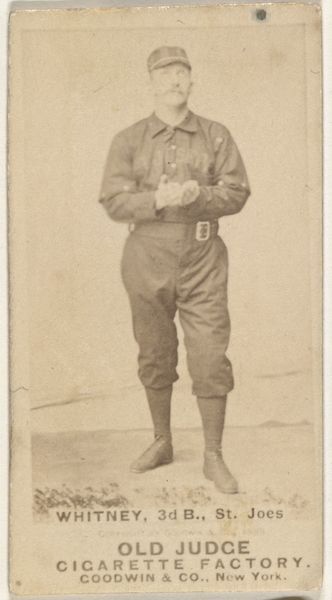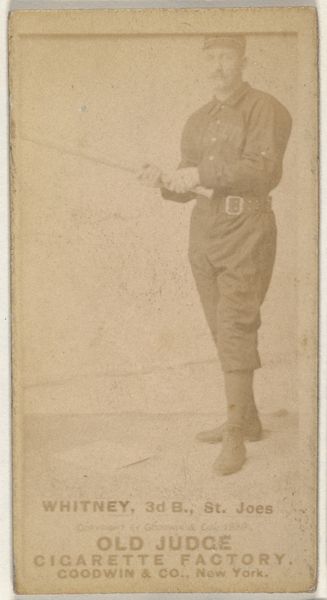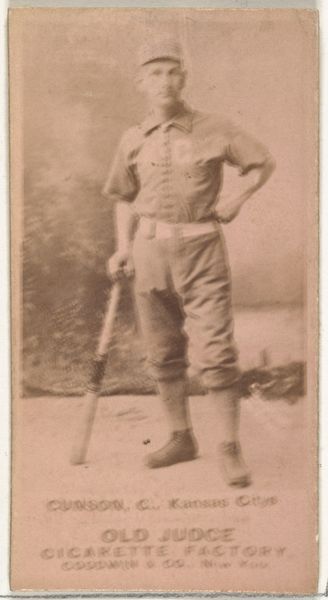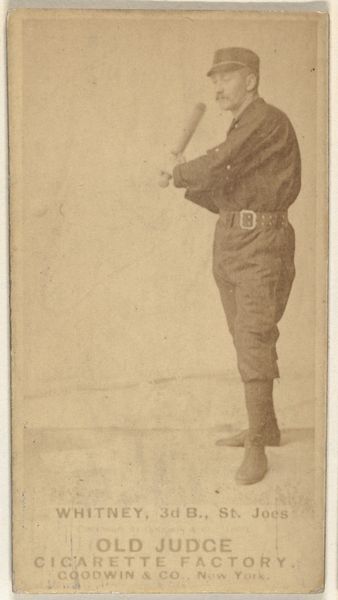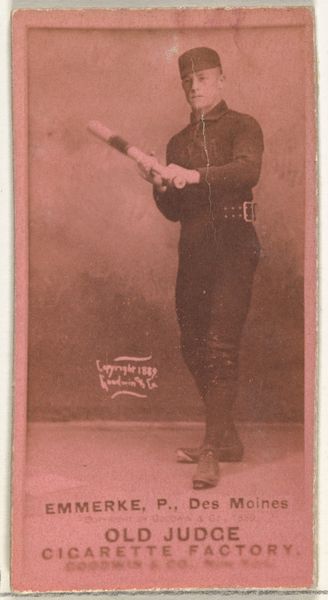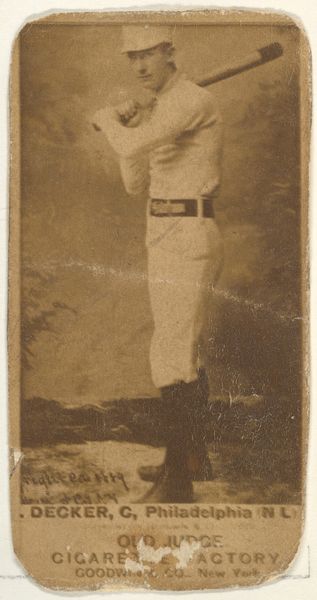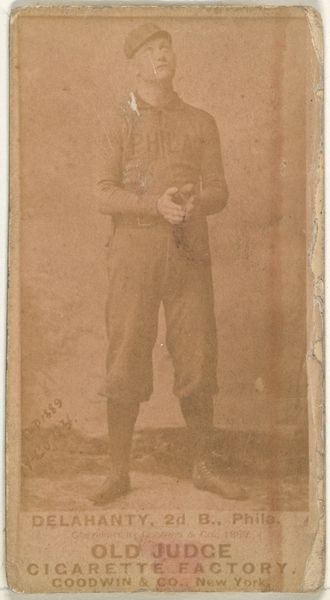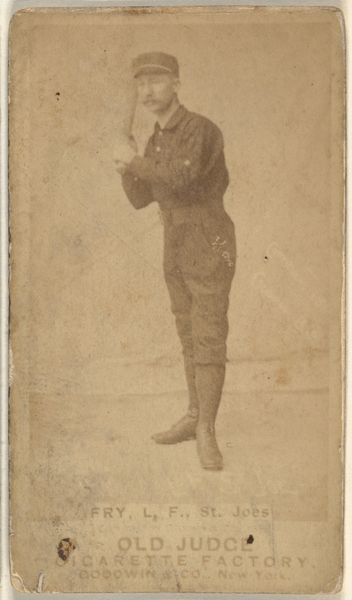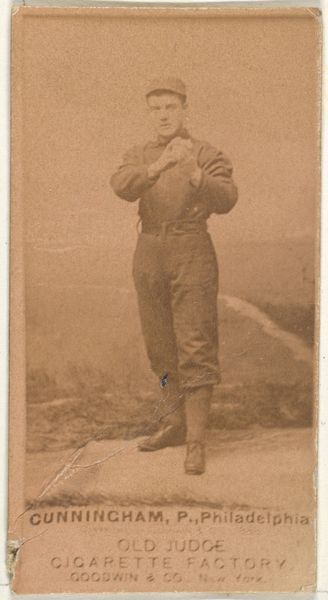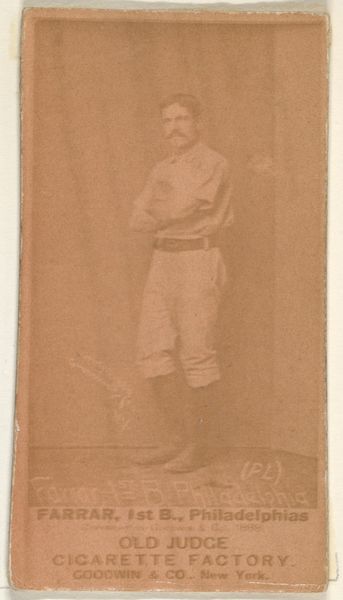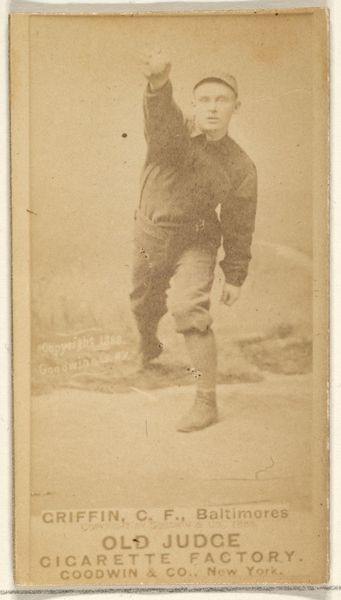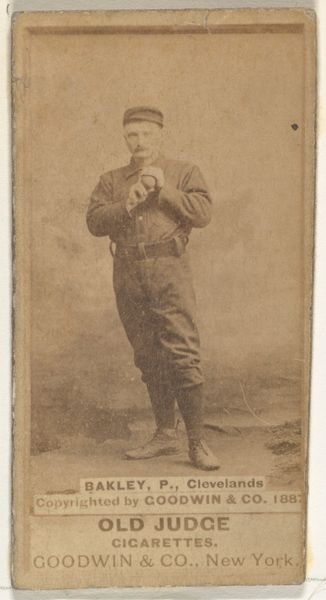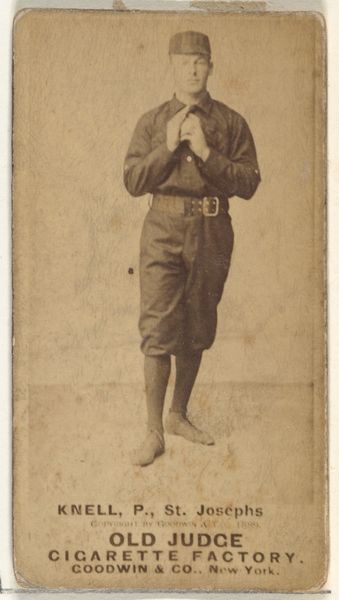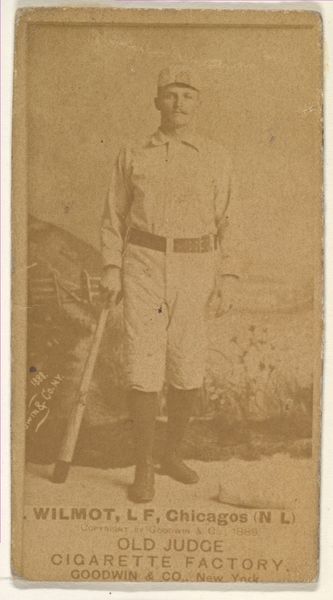
Ervin Duane "Jim" Curtiss, Right Field, St. Joseph Clay Eaters, from the Old Judge series (N172) for Old Judge Cigarettes 1887 - 1890
0:00
0:00
print, photography, albumen-print
#
portrait
# print
#
baseball
#
photography
#
men
#
history-painting
#
albumen-print
#
realism
Dimensions: sheet: 2 11/16 x 1 3/8 in. (6.9 x 3.5 cm)
Copyright: Public Domain
Curator: Here we see “Ervin Duane "Jim" Curtiss, Right Field, St. Joseph Clay Eaters, from the Old Judge series (N172) for Old Judge Cigarettes,” dating from 1887 to 1890 and attributed to Goodwin & Company. It's a vintage albumen print now residing at the Metropolitan Museum of Art. Editor: What immediately strikes me is the sepia tone and its diminutive size. It has the feel of something mass-produced, almost industrial. Curator: Indeed, it was designed to be inserted into cigarette packs, transforming Curtiss into both a sporting hero and a promotional tool. The name "Clay Eaters" also resonates—so evocative! The nickname feels intrinsically linked to the players and the region they came from. The albumen print adds a dreamlike veneer that time only enhances. Editor: It's interesting to think about this as an early form of marketing—commodifying athleticism alongside tobacco. Albumen printing involves coating paper with egg whites and silver nitrate. A relatively inexpensive process, reflecting how art and commerce begin to blur. The card is thin; you can sense the textures. Curator: Note how he's posed: frontal, almost confrontational, with the baseball bat acting like a scepter, hinting that even in sports, there's an element of ritual, tradition, perhaps even a power structure at play. This man became a sort of visual talisman for fans. The very uniformity of his dress becomes a cultural unifier. Editor: I agree that the cigarette card works like a tool for standardization. It helped to define what it meant to be an American baseball player at this particular moment, through pose, attire, and through sheer quantity. Curator: What's so remarkable is that these everyday items now function as powerful reminders of what we used to value, or rather, what consumer culture encouraged us to value. Images speak volumes about historical desire. Editor: Precisely. It exposes the social and industrial machinery that makes the American hero—of which the legacy carries on even today. And there’s the charm of the baseball card itself, a piece of fragile material holding such heavy weight. Curator: A simple piece of cardboard can hold immense historical memory, as it offers us insight into forgotten dreams and aspirations. Editor: Agreed, and from the physical trace alone, we’re able to dissect a century's worth of labor, media, and culture.
Comments
No comments
Be the first to comment and join the conversation on the ultimate creative platform.
